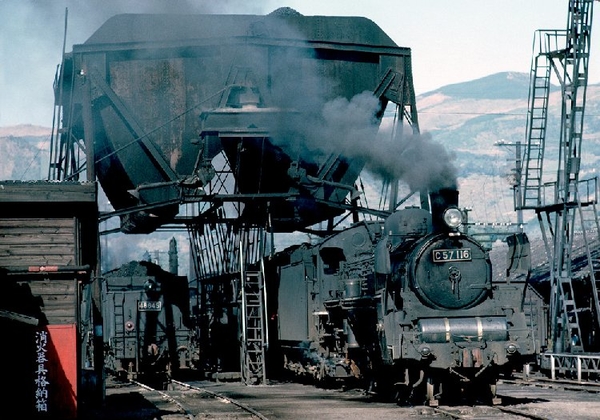Very interesting! See, you don't learn those kind of things with the casual mentions of the steam locos in general media, hearing stories from people who lived during those times is fascinating!
How I regret not talking so much more to my grandfather who died in 2003. He was 100 years old when he passed, born the same year the Wright Brothers flew their plane at Kitty Hawk. I remember learning little bits of things from him like what it was like to live in the depression era.
But now that I'm older, i realize that there was so much more I could have learned from him.
one of the things I recommend is seeking out books where the authors interviewed people from older generations, there are also video interviews out there, audio recordings. I personally loved the books of Studs Terkel because he interviewed ordinary people about their lives, and his books on the Great Depression and WWII told in some ways a very different story than often seems to be told this day (the further we get from the Depression, impressions of the harshess of it lessen and myth replaces reality, with WWII the further we get from it, turns more into hero worship rather than remembering that the people who fought it were human, most of them young men, and their own view of the war was much different than what can be portrayed (my dad was a WWII combat veteran in Europe, and among things he hated writers that glorified the WWII experience, rather than wrote the reality of it..and I'll leave it at that). One thing I will add is that likely to the people of the time (not talking kids...), steam train services were simply part of the backdrop for most, the same way that modern diesel units and electric train service, or airliners or busses, are simply part of the backdrop to most people. There have always been railfans, and aviation fans, and the like, but if you asked most people about traveling by rail, or train freight deliveries back in the day, they would probably not make that big a deal out of it I would bet, and if they did remember it would be complaining about the problems with late trains, service that wasn't all that great, train stations that were not in great shape, etc  . We often run into the argument that with trains these days more of a background thing, that people from the 'modern era' will be less interested in trains or train modeling than older people who had experienced trains in the golden age were, but I am not so sure, again, because trains back in the day to most people I suspect were infrastructure. By the time I was growing up and aware, passenger trains were in the realm of Amtrak, freight trains were in trouble, yet today a lot of the hobby is people my age or younger, not everyone is someone born in the 1940's or 50's (or earlier
. We often run into the argument that with trains these days more of a background thing, that people from the 'modern era' will be less interested in trains or train modeling than older people who had experienced trains in the golden age were, but I am not so sure, again, because trains back in the day to most people I suspect were infrastructure. By the time I was growing up and aware, passenger trains were in the realm of Amtrak, freight trains were in trouble, yet today a lot of the hobby is people my age or younger, not everyone is someone born in the 1940's or 50's (or earlier , and their are significant numbers of people younger than myself (I am in my late 50's).
, and their are significant numbers of people younger than myself (I am in my late 50's).
I remember reading an article a while ago about an engineer who was retiring from the Erie Lackawanna (by then prob was Conrail or NJ transit, don't recall if he was a freight or passenger engineer), and the article mentioned that the Erie retired their last steam engine in 1970 or so and this guy was one of the last of the engineers who had run steam.
On the other hand there are a lot of rail fans/model railroaders who run steam, and many of them/us (I never saw steam, too young) who love steam engines and when we model do the steam/diesel transition era or even earlier when it was almost all steam. From looking at the articles in Model Railroader and elsewhere and looking at the layouts and the age of those building them, even younger modelers seem to model older railroads than modeling the trains they have seen themselves (obviously, there are still a lot of modelers who have layouts featuring modern equipment, I just meant that what you are exposed to might not automatically mean that is all they care about).













